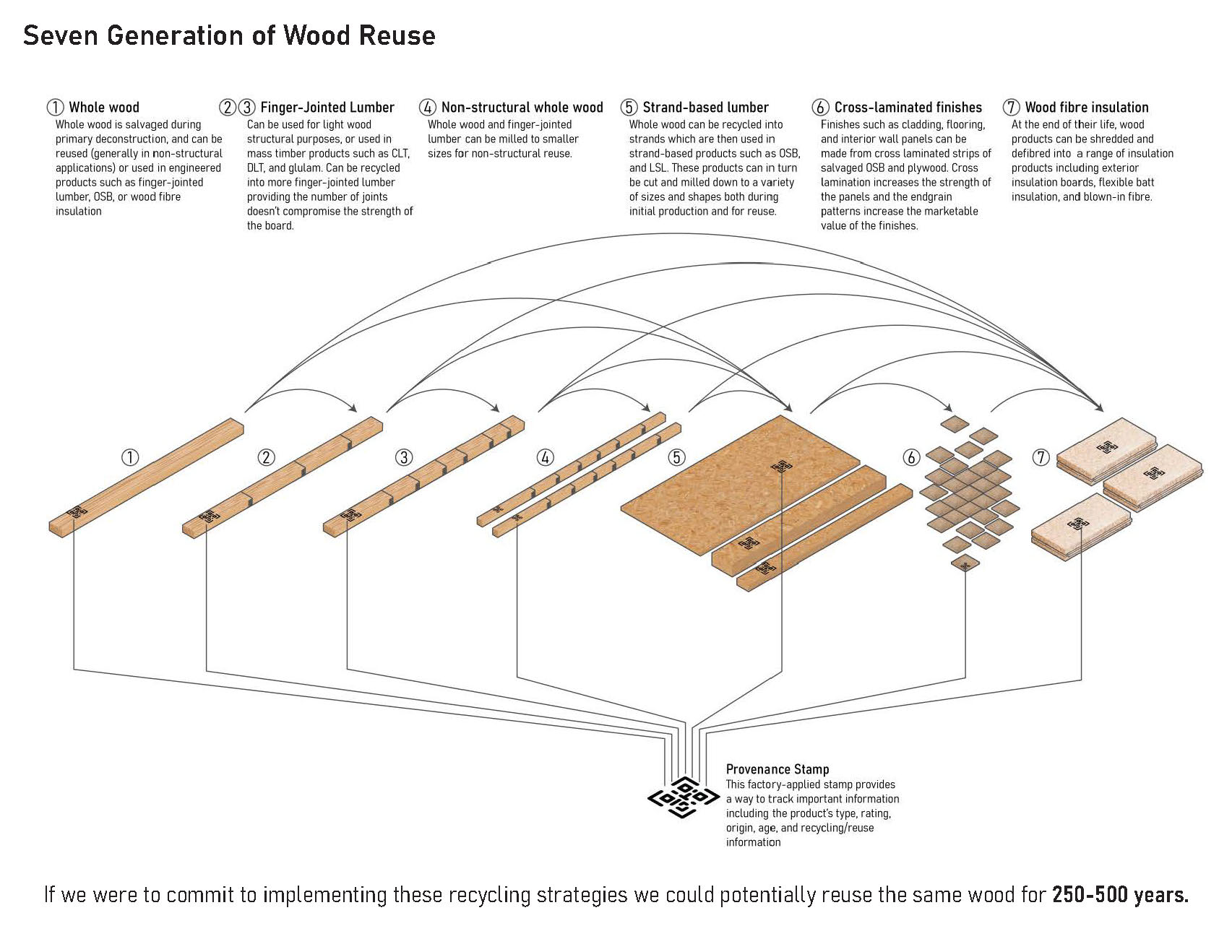
The goal in researching these materials and creating this wall system was to prove that relatively straightforward changes to our typical construction practices and recycling infrastructure can have massive benefits to the sustainability of Vancouver, and potentially BC as a whole. As we increase density in the city it is vital that we leverage the materials that are already available to us. The average lifespan of a building in Canada is around 70 years, but the construction materials we use have far more potential durability. By using this proposed recycling system and designing our building with deconstruction in mind, we could theoretically reuse a single piece of wood for seven generations worth of buildings which could translate to as much as 500 years of use. To realize this kind of system it would be necessary to track wood across multiple generations of buildings. Individual pieces of wood would need to be marked in such a way as to communicate age, provenance, species, grade, and material type and that information would need to be preserved through subsequent recycling processes. Tracking information across multiple generations of recycled materials could also be a way of adding contextual value beyond the purely functional and include details of the history of construction and deconstruction to which that wood has been witness. In this way, wood materials could add both cultural and practical value to the city.
Developing systems for reusing wood within our building industry is essential as Vancouver and other municipalities transition to zero waste. The Vancouver landfill in Delta which accepts waste from across the Lower Mainland and Vancouver Island is set to be closed in 2037, meaning we must get the systems to support a circular economy in place well before that deadline. By focusing on wood waste from the C&D sector we can eliminate a significant source of volume from the landfill and other less efficient recyclers.